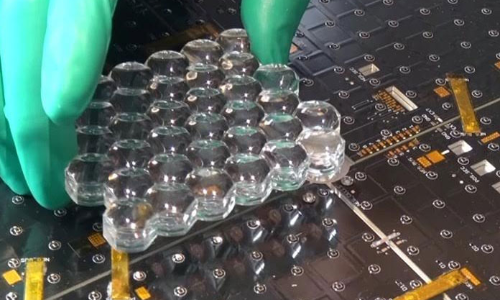These hyper-efficient solar panels to reside on your roof soon

The clean energy boffins in their labs are always doing something unexpectedly from the theoretical limit on how much power you can get out of sunshine, but we plebs actually installing solar cells are stuck with yearsold tech thats not even half developed as what theyre seeing This new design from Insolight could be the one that changes all that
The clean energy boffins in their labs are always doing something unexpectedly from the theoretical limit on how much power you can get out of sunshine, but we plebs actually installing solar cells are stuck with years-old tech that’s not even half developed as what they’re seeing. This new design from Insolight could be the one that changes all that.
Insolight is a spinoff from the École Polytechnique Fédérale de Lausanne, on this new approach they’ve been working here for a few years and now it’s almost ready to hit your roof.
Generally, solar cells absorb sunlight on their entire surface; converting it to electricity at possibly 15-19 percent efficiency which means about 85 percent of the energy is lost during the process. There are more efficient cells there, but they’re usually expensive and special-purpose or use some unusual material.
One place people tend to spare no expense, however, is in space. Many satellites have solar cells which are more efficient but not cheap as predicted. But if you only use just a tiny amount of them it won’t be a problem and concentrate the sunlight on those; that’s the Insolight insight.

On a grid, small but very high-efficiency cells are laid down, and above that is placed a honeycomb-like lens array that takes light and bends it into a narrow beam concentrated only on the tiny cells. As the sun moves, the cell layer also moves along slightly, keeping the beams on target. They’ve accomplished as high as 37 per cent efficiency in tests, and 30 per cent in consumer-oriented designs. That means half again or twice the power from the same area when compared to ordinary panels.
Certainly, this adds a layer or two of complexity to the current mass-manufactured arrays that are “good enough” but far from state of the art. But the resulting panels aren’t much different in size or shape and don’t require special placement or hardware, such as a concentrator or special platform. And a recently completed pilot test on an EPFL roof was very successful.

Mathiu Ackermann, the company’s CTO, told in an EPFL news release, “Our panels were hooked up to the grid and monitored continually. They kept working without a hitch through heat waves, storms and winter weather. This hybrid approach is particularly effective when it’s cloudy and the sunlight is less concentrated since it can keep generating power even under diffuse light rays.”
The company is now in discussion with solar panel manufacturers, whom they are no doubt trying to convince that it’s not that hard to integrate this technology with their existing manufacturing lines.
Ackermann told, “a few additional steps during the assembly stage,” Expect Insolight panels to hit the market in 2022 — yeah, it’s still a ways off, but maybe by then we’ll all have electric cars too and this will seem like a superb deal.



















